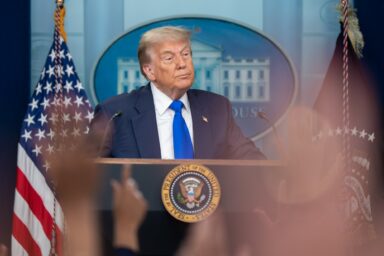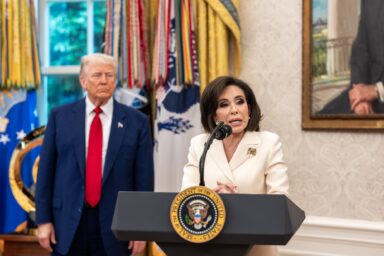[Update below – Ed.]
Over Independence Day weekend, Sergey Aleynikov, a former Goldman Sachs computer programmer, was arrested by the FBI for allegedly stealing the firm’s high-speed stock- and commodities-trading programming code and uploading it to an unidentified Web server in Germany.
At Aleynikov’s July 4 bail hearing, Joseph Facciponti, an assistant U.S. Attorney, told the federal magistrate judge:
The bank has raised the possibility that there is a danger that somebody who knew how to use this program could use it to manipulate markets in unfair ways.
Bloomberg’s Jonathan Weil asks the obvious question (emphasis added):
All this leaves us to wonder: Did Goldman really tell the government its high-speed, high-volume, algorithmic-trading program can be used to manipulate markets in unfair ways, as Facciponti said? And shouldn’t Goldman’s bosses be worried this revelation may cause lots of people to start hypothesizing aloud about whether Goldman itself might misuse this program?
For more on the details of this intriguing story, I recommend this post from the Zero Hedge financial blog and this article from Reuters business columnist Matthew Goldstein.
How might Goldman Sach’s program allow the company to manipulate stocks and commodities markets? Blogger DonDi at the TPM community blog offers a hypothesis: Goldman Sachs was using its special access to the President’s Working Group on Financial Markets (known informally as the “Plunge Protection Team”), established after the 1987 crash to prevent future meltdowns, to “front-run” the rest of the market.
The Gold Anti-Trust Action Committee has requested that the S.E.C. and the U.S. Commodity Futures Trading Commission investigate Goldman Sachs’s trading program.
Wherever this story leads, it is clear that a media backlash against Goldman Sachs is building.
POSTSCRIPT: To put Goldman Sach’s second-quarter profit report in proper context, I recommend Glenn Greenwald’s review of recent history.
UPDATE: The New York Times has picked up the story:
Nearly everyone on Wall Street is wondering how hedge funds and large banks like Goldman Sachs are making so much money so soon after the financial system nearly collapsed. High-frequency trading is one answer.
And when a former Goldman Sachs programmer was accused this month of stealing secret computer codes — software that a federal prosecutor said could “manipulate markets in unfair ways” — it only added to the mystery. Goldman acknowledges that it profits from high-frequency trading, but disputes that it has an unfair advantage.
Yet high-frequency specialists clearly have an edge over typical traders, let alone ordinary investors. The Securities and Exchange Commission says it is examining certain aspects of the strategy.
“This is where all the money is getting made,” said William H. Donaldson, former chairman and chief executive of the New York Stock Exchange and today an adviser to a big hedge fund. “If an individual investor doesn’t have the means to keep up, they’re at a huge disadvantage.”


